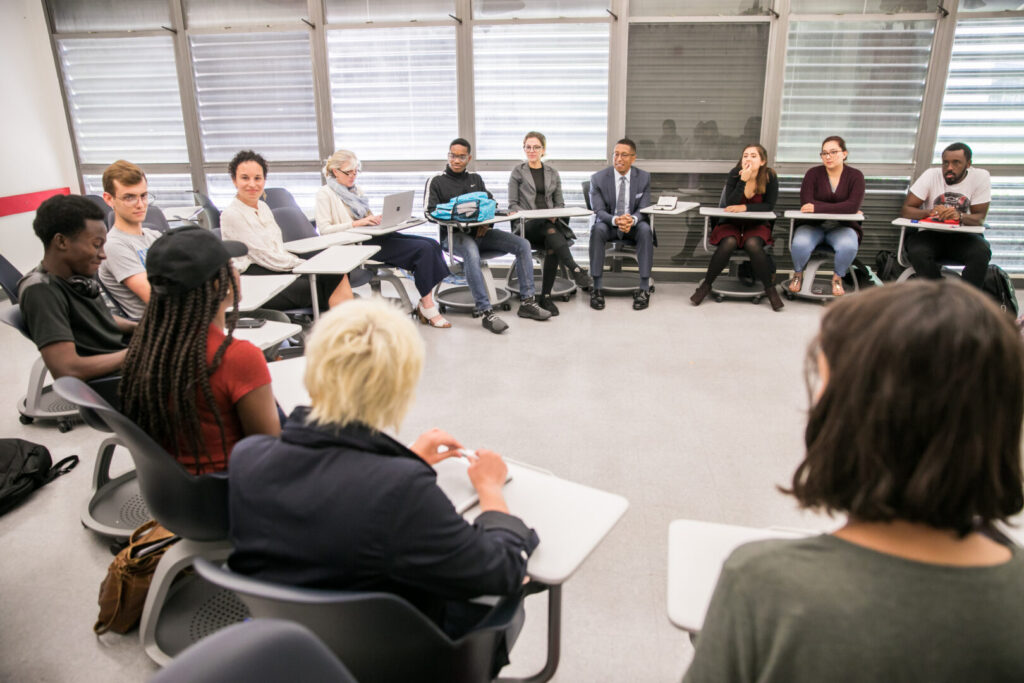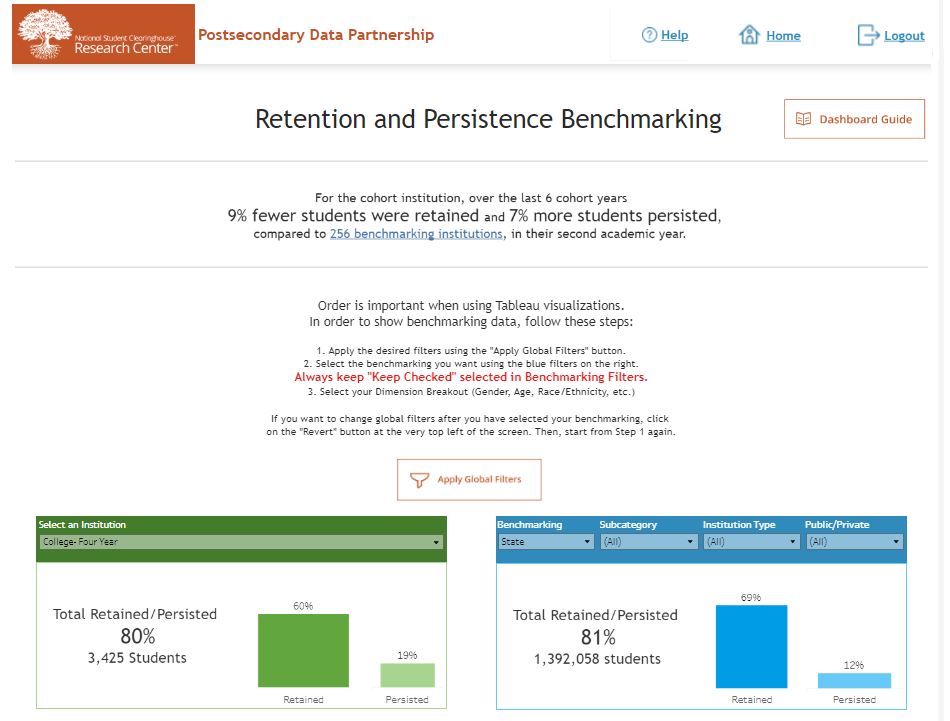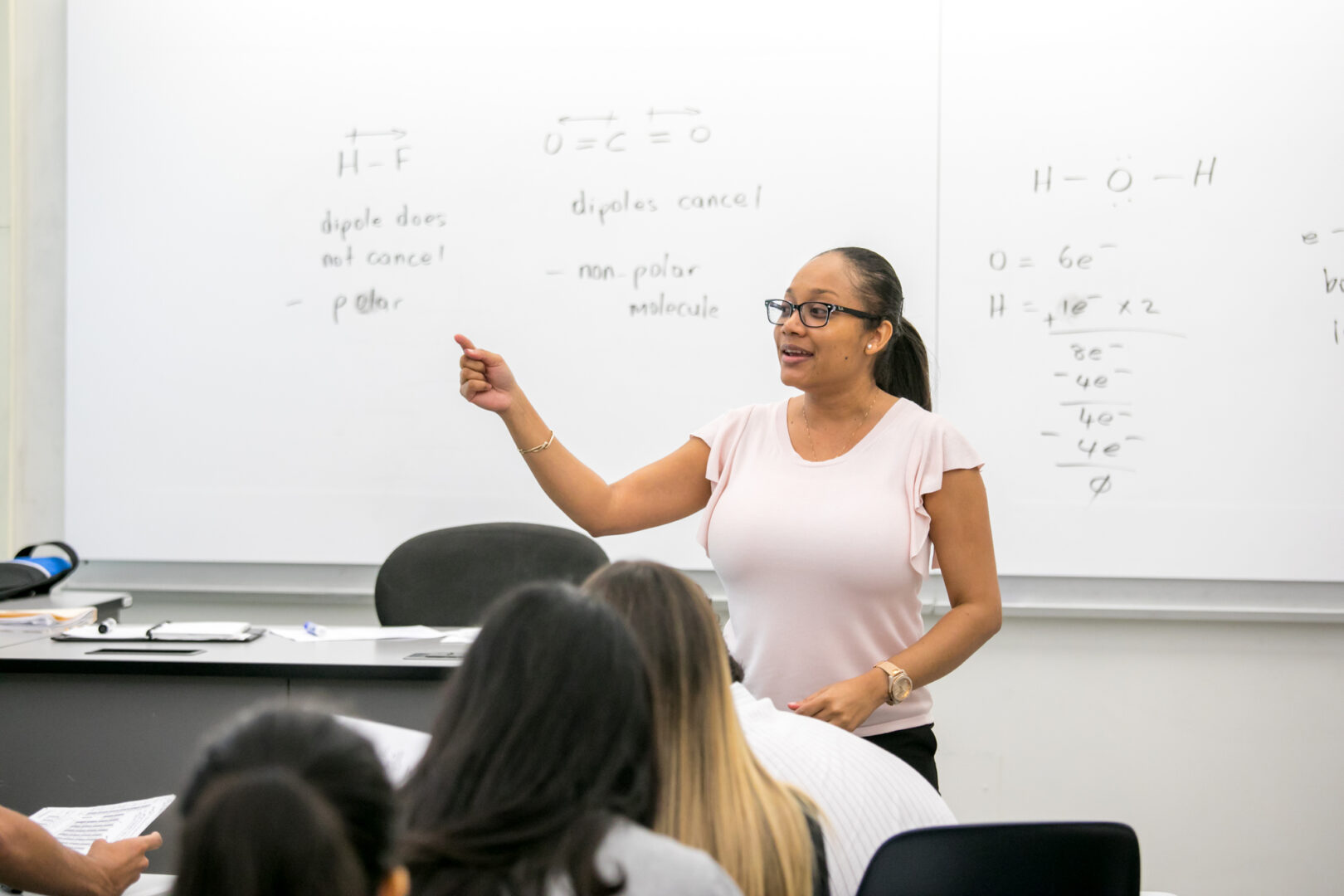Pandemic or not, September marks the back-to-school season for K-12 and postsecondary institutions across the United States. Yet too often, race, ethnicity, and income are predictors of student access to—and success in—postsecondary spaces. To flip the script, educators and administrators need innovative, evidence-based solutions to improve student outcomes. That’s where data can be a game-changer.
We connected with Nicole Ifill, Deputy Director, Data on the Gates Foundation’s U.S. Program team to learn more about how higher education institutions can leverage data to center students—and inspire systems-level change.

Gates Philanthropy Partners: Why does the foundation have a Postsecondary Success team? What makes your approach to supporting students unique?
Nicole: At the end of the day, one of the most critical decisions an individual can make is how their educational experience will contribute to their future career opportunities. We know there are significantly higher returns on investment and increased social and economic mobility associated with attending and completing postsecondary college programs.
At the same time, we also know there are major disparities by race, ethnicity, socioeconomic status for students in terms of outcomes. We want to remove those aspects as predictors of success in the labor market. Yet in the absence of postsecondary education, we’d worry about the implications of whether the community at large would be able to provide meaningful opportunities to all students.
The foundation’s approach is unique because we focus on systems change. We often hear that students have dropped out, transitioned to part-time, or didn’t finish their programs. We want to think differently about the systemic way that institutions are created, sustained, and funded that disproportionately and negatively impact Black and Latino students and students from low-income backgrounds.
If a student goes part-time, 9 out of 10 times, it’s because they need to work. The current system is focused on a traditional 18-year-old graduating high school, going into a postsecondary program, and graduating in four years.
Yet there are many adult students who go into postsecondary programs for training or education for the first time later in life. How can a part-time student with a full-time job get to a lecture taking place midday? They can’t. We need to stop thinking about postsecondary success as a result of the decisions that students are making—and instead focus on the structures on campus that enable them to complete their programs or degrees on time.
How do we center the student in the postsecondary education structures in a more equitable and representative way? That’s what the Postsecondary Success team aims to address.

Gates Philanthropy Partners: Talk to us about data. Why is it important for this work? How does it advance equity and improve outcomes in U.S. education?
Nicole: Data is a huge part of understanding and ultimately improving postsecondary outcomes and success. When it comes to national reporting, the federal government too often relies on a graduation rate definition that only includes first-time, full-time, fall-enrolled students who graduate within six years. This unfortunately offers a narrow picture of the student experience.
In reality, many adult students attend part-time, and a quarter of community college students start in the spring. What are their barriers? When do they finish their studies? Often, the answers to these questions correlate to their financial circumstances or the challenges of being an adult student. Likewise, community colleges serve a very different population than four-year institutions. So, how can we capture better data more consistently to understand what colleges and universities can do to better serve increasingly diverse students—and put them on the path to success?
The Postsecondary Data Partnership (PDP) plays an important role in helping administrators ask and answer more holistic—and more frequent—questions like these. PDP is an initiative of our partner National Student Clearinghouse that is pushing to make sure the stories being told about higher education aren’t just focused on the students with the most resources or the best opportunities.
PDP is meant to expand the way we think about postsecondary completion and success. This tool helps inform academic institutions to center the students’ choice and not just force them to enroll in the fall when they have families, children, other obligations that constrain their ability to lean into education in the same way. There’s a new feedback loop and cycle of demand for improvement at play.
Of course, equity is deeply embedded in this work. This more expansive approach to capturing the experience and reality of postsecondary students aims to fix key gaps in the data we have—and show all the learners that move through the education system. It also empowers educators to speed up their response when there’s a challenge, giving them new tools and information to support students in whatever they need during their first year and beyond.
Gates Philanthropy Partners: Let’s bring this work to life. Tell us about a grantee partner or a story that really excites you about this work.
Nicole: Achieving the Dream is one organization that has taken up the mantle of data-driven decision-making, which is critical to improving outcomes for students. They have a technical assistance model that they implement on 300 community college campuses across the country, tailoring plans to build capacity of leadership, faculty, and data systems to create change.
To date, Achieving the Dream has served over 4 million students in 45 states—an extraordinary reach that is helping to close the equity gap in those colleges and communities. Also, as an organizational partner of PDP, they’ve encouraged all colleges in their network to join, and they use the PDP framework to inform their own programming, building institutional capacity to use more granular information for campus decision-making.
In particular, PDP’s dashboards are an important part of Achieving the Dream’s work because of their game-changing role in how institutions approach and understand gaps at the systems level. Before connecting with PDP, administrators could only look at old problematic definitions on graduation rates and other data points to understand disparities in student outcomes. Beyond using limited data, these statistics were only available as fixed PDFs of student outcomes, limiting the conversation to the questions printed on the page.
In contrast, PDP provides dynamic dashboards, which enable users to compare multiple cohorts of students and similar institutions. The type of guidance that Achieving the Dream can provide to an institution is more streamlined and dynamic, expanding the conversation with a single click.

Gates Philanthropy Partners: So, what’s next for Data and Postsecondary Success? What do you see as the biggest innovation or opportunity in the world of postsecondary success?
Nicole: We are trying to put an institutional model in place that could be transformative in the postsecondary space. It integrates the capacities of the institution with outcome data on students, and together, these factors would help create fundamental changes in policies and practices to promote student success. We want to enable administrators and staff to have deeper, richer conversations in order to identify what within that system is and isn’t working for students.
At the heart of those conversations are important questions: What structures are in place at a given school that pose barriers that limit ease of access to education? What elements of campus culture are driving the disparities we see between racial and socioeconomic categories? What are the challenges facing leadership in full implementation of the policies and practices that can open new pathways for all students?
Gates Philanthropy Partners: What keeps you optimistic?
Nicole: When we think differently about the intersection of postsecondary programs, student outcomes, and data, we can start to identify which students are being left behind because of problematic policies. Federal policy looks at data as a critical part of any evidence-building, so it’s work that truly matters to shift the narratives and outcomes of what postsecondary success looks like.
Our north star has always been a national approach, including establishing a federal student unit record data system to capture the issues and gaps that initiatives like the Postsecondary Data Partnership seek to resolve. You can’t talk about all outcomes and all students with such constrained data.
I’m also excited about how data is increasingly important in informing policy at the systems level. Legislation like the Evidence-Based Policymaking Act of 2018 can make it easier to share data in service of program implementation and evaluation across all spheres of society.
Finally, in the new frontier of data and education, I’m often thinking about where we place value. One of our hypotheses around data is that demand from stakeholders—educators, students, administrators, leadership—leads to improving the systems themselves. Many are wondering about what key questions to ask in the first place.
Sometimes, when we have so much data, it can be overwhelming to figure out how to focus. That’s why Achieving the Dream’s work is so instrumental for colleges because they help administrators focus their energy. The Data team has also worked with Mathematica to release a framework that establishes a comprehensive set of metrics and practices for education-to-workforce data systems. This tool takes all the ways we can measure and understand student progress in the education pipeline and distills them to the 20 key questions we feel are most critical.
Ultimately, I’m hopeful that all our work will help reframe what it means to be successful in postsecondary education by ensuring equitable value for improved outcomes for all students.

